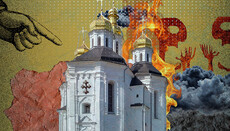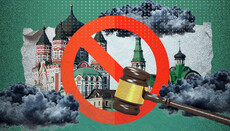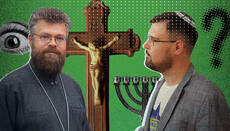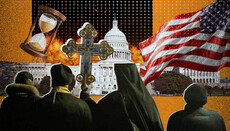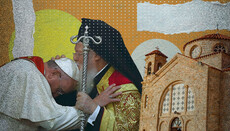Why Patriarch Bartholomew is against the Ecumenical Council
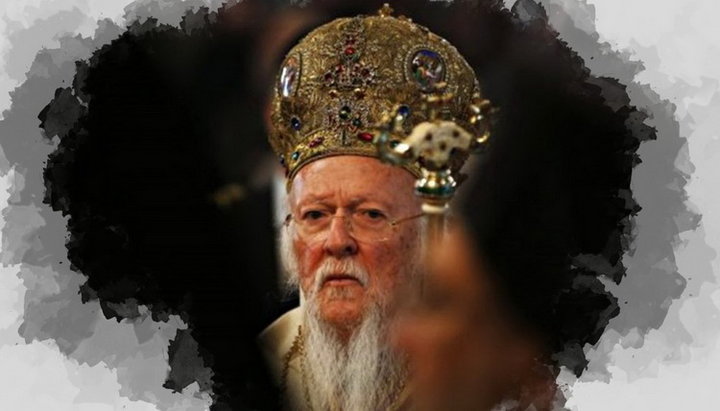
Why did the Church convene Ecumenical Councils, what was the Cretan Council about, and why does Phanar fear a pan-Orthodox solution of the “Ukrainian issue”?
Recently, Patriarch Bartholomew of Constantinople in a letter to Patriarch John X of Antioch has refused to solve the Ukrainian problem at the pan-Orthodox level. Why were the Ecumenical Councils convened in the first millennium? What was the recent Council in Crete? And why is Patriarch Bartholomew so afraid to convene a real Ecumenical Council?
First of all, a few words about what the Councils are in essence and what is the principle of conciliarity, which the Church of Christ has followed throughout its history.
The world around us imposes political, legal, social, psychological concepts and makes transfer these concepts to the religious sphere. This fact causes a distorted and sometimes a dramatically distorted vision of religious reality.
For example, we do not hesitate to transfer the political concept of democracy to the religious sphere and identify it with conciliarity. This is fundamentally wrong! Democracy is the power of the majority. If the majority holds any opinion, this does not mean that this opinion is correct. Democratic instruments – elections, referendum, etc. – allow revealing the will of the majority. Church Councils are about something else.
The Councils are aimed to reveal, express, and word the will of God on a specific issue. The Council is a way to manifest the will of God, not the human will. That is why those who disagree with the results of elections or referendums are called dissidents, but those who disagree with the actions of the Councils are called excommunicated heretics.
The Council is a way to manifest the will of God, not the human will.
Very often the course and results of the Ecumenical Councils turned out to be completely different from what their initiators had conceived. The very first Council in Nicea was convened in 325 by the emperor Constantine, so that the supporters and opponents of Elder Arius reconciled with each other and worked out a theological formula that would suit everyone. This was required by the vital interests of the empire. But it turned out quite the opposite. A formula was adopted that did not unite, but clearly divided the Orthodox and Arians and this was followed by decades of religious unrest in the empire.
Christians should not seek to impose their will on anyone. In the prayer "Our Father" we ask: "Thy will be done ..." Our Lord Jesus Christ himself said about himself: "I cannot create anything from myself. As I hear, so I judge, and My judgment is righteous; for I do not seek My will, but the will of the Father who sent Me ” (John 5, 30).
It is in the Councils that the Holy Church sees a way to manifest the will of God. All the apostles of Christ were enlightened by the Holy Spirit, nevertheless, none of them dared to single-handedly resolve the issue concerning the entire Church, instead the Apostolic Council was assembled, which was entitled to proclaim: “For the pleasure of the Holy Spirit and ours ...” (Acts. 15, 28).
At the same time, the very fact of holding a council, even though with the participation of representatives of all the Local Churches, is not yet sufficient to confirm that it has expressed the will of God. It is also important how the Church of Christ in its fullness will accept the decisions of such a council. In the history of the Church there are cases when the Council, held with the participation of all the Local Churches and declared as Ecumenical, was later recognized heretical and predatory. So, the Councils are not about democracy but identification of the will of God.
Why Ecumenical Councils were convened
It is believed there were seven Ecumenical Councils and they all took place in I millennium.
As a small digression, let us say that the Orthodox Church does not attribute any mystical value to the number of Ecumenical Councils. She does not believe that there can be only seven Councils, and the eighth, if held, should necessarily be “anti-Christ”.
At all times, people liked beautiful numerical bindings. For example, after the Third Council in Ephesus in 431, opinions were expressed that there can be only three Councils, according to the number of the Persons of the Most Holy Trinity. After the Fourth Council in Chalcedon in 451 it was thought that there can only be four of them by the number of Evangelists.
It is not clear why the Apostolic Council, which was held in around 49 year (according to other data, in 51 year) in Jerusalem, is not included among the Ecumenical. After all, it was a real Ecumenical Council, both in terms of the composition of the participants and the importance of the issue under discussion.
Another two Councils are also not considered Ecumenical, although they were essentially so. This is the Council of Constantinople in 879–880, which was attended by 383 bishops from all the Local Churches, including the papal legates. It condemned the heresy of filioque. Another Council of 1341-1351, known as a series of six patriarchal meetings in Constantinople, approved the teaching of St. Gregory of Palamas on the uncreated nature of the Light of the Mount Fabor. Many theologians and historians of the Church consider these two Councils to be among the Ecumenical, which therefore turns seven into nine. And if you count the Apostolic, then there are ten councils all in all.
The Orthodox Church does not believe there can be only seven Councils, while the eighth should necessarily be “anti-Christ”.
Ecumenical Councils were convened in order to establish the Orthodox faith in cases where there was a real threat of its distortion by heresies, false teachings. They were the reaction of the Church to heresies, which became obvious and threatened the most important thing – the salvation of man by our Lord Jesus Christ. Let’s now recall them briefly.
I Ecumenical Council in Nicea, 325 A.D. It condemned the heresy of Arius, the presbyter of Alexandria, who claimed that the Son of God, the Second Person of the Most Holy Trinity, is not the true God but the highest creation of God the Father. He approved the Orthodox dogma that the Son of God Jesus Christ is the True God, born of God the Father before all ages and coessential to Him. The Council articulated the first seven positions of the Creed.
II Ecumenical Council in Constantinople, 381 A.D. It condemned the heresy of Macedonius, which rejected the Deity of the Holy Spirit, the Third Person of the Most Holy Trinity. Macedonian taught that the Holy Spirit is not God but a certain power of God, created and serving God the Father and God the Son. In response to this false doctrine, the Council approved the dogma of equality and coexistence of God the Holy Spirit with God the Father and God the Son. It supplemented the Nicene Creed with another five positions which is why this symbol of faith was called Nicene-Tsargrad.
III Ecumenical Council in Ephesus, 431 A.D. It condemned the false teaching of Patriarch Nestorius of Constantinople who taught that the Holy Virgin Mary did not give birth to God but to the man Jesus Christ, with whom God the Son united later and lived in him as in his abode. It resolved to recognize that since the time of incarnation two natures have united in Jesus Christ: the Divine and the human. And both of these natures were perfect, without any derogation. It forbade to remove or supplement anything in the Nicene-Tsargrad Creed.
IV Ecumenical Council in Chalcedon, 451 A.D. It condemned the heresy of the Monophysites, who rejected human nature in Jesus Christ and said that the Divinity in Christ had completely consumed his human nature. It articulated the Orthodox teaching that our Lord Jesus Christ is the True God and the true man, in everything similar to us, except for sin. The divine and human natures blended in Him as "distinct and unalterable, inseparable and indivisible."
V Ecumenical Council in Constantinople, 553 A.D. It condemned the writings of three bishops who died in the V century: Theodore of Mopsuestia, Theodoret of Cyrus and Eve of Edessa. They concerned disputes over the teachings of Nestorius, who was convicted by the Third Ecumenical Council. The heresy of Nestorius and Monophysitism was condemned at the Council.
VI Ecumenical Council in Constantinople, 680 A.D. It condemned the heresy of the Monothelites who despite the fact that Christ was recognized to have two natures, divine and human, claimed that the Savior had only one will – the Divine. It determined to recognize two natures in Jesus Christ, divine and human, as well as two wills. At the same time, the human will in Christ is submissive to the divine will in everything.
VII Ecumenical Council in Nicea, 787 A.D. It condemned the heresy of iconoclasm, which arose 60 years before the Council. The danger of this heresy was that by rejecting the images of Christ, they also rejected the reality of the Incarnation. The Council determined to honor the holy icons and the image of the Cross of the Lord.
All the Ecumenical Councils were convened by the Byzantine emperors, who ensured the conduct, incurred expenses, and often worded the agenda. There are no decisions as to who, how, in what order has the authority to convene the Ecumenical Council. The current claims of Phanar that only it and no one else has the authority to convene them, are groundless.
What the Cretan Council was like
The Council in Crete was held in June 2016. Preparations for it had been conducted for almost a hundred years. It was attended by 10 out of 15 (14 generally recognized) Local Churches. This fact does not allow recognizing the Cretan Council as Pan-Orthodox, even if one does not pay attention to the fact that the Russian, Georgian, Antiochian and Bulgarian Churches, which were not present at the Council, unite more than half of all Orthodox Christians in the world.
After almost three years, it can be stated that the main organizer of the Cretan Council, the Patriarchate of Constantinople, conceived it to:
1. approve the supremacy of the Patriarchate of Constantinople in the Orthodox world;
2. open the way to ecumenical contacts with the Vatican (mostly).
These are the main objectives of the Cretan Cathedral. It was not called to convict any heresy like the Ecumenical Councils. It was not originally called to answer any burning issues of contemporary church life. The questions submitted for discussion were completely at odds with the status of the Council.
Actually, to confirm that the marriage is unshakable and the fast is mandatory? For this one needs to convene the Pan-Orthodox Council 1200 years after the previous one? But if you carefully read the documents of the Cretan Council, it becomes perfectly clear how, with the help of such minor issues, Phanar almost managed to achieve the two goals above.
Let's start with the second: to create theological and canonical prerequisites for bringing the process of unification with the Catholic Church to a qualitatively new level. This is something that many people noticed during the preparation of the Cretan Council and this is why four Churches did not go to it.
Many authoritative hierarchs and theologians, including those from the Local Churches who were present at the Cretan Council, openly and publicly expressed their disagreement with the drafts of its documents. The main complaints were made against the text of the document “Relations of the Orthodox Church with the rest of the Christian world”. Its essence is as follows:
• The name of non-Orthodox confessions “Churches”. In paragraph 1, the Orthodox Church is called “The One, Holy, Catholic, and Apostolic”, while paragraph 6 says about “the existence in the history of other Christian Churches and denominations that are not in communion with it”.
• Repeated references to “restoring Christian unity”. This thesis is initially untenable, since this unity is preserved in the Orthodox Church. Para 6 states that "the unity which the Church possesses by its ontological nature cannot be broken". However, it is stated slightly below that the “objective goal” of an inter-Christian dialogue is “to prepare the path to unity”. Unity with the Church of all who have fallen away from it is possible only through repentance, but for some reason this is not discussed in the documents of the Cretan Council.
• Claims that the conciliar structure is “the highest criteria of the Church in matters of faith". Paragraph 22 says that “the preservation of the true Orthodox faith is possible only thanks to the catholic structure, which from ancient times has represented the competent and highest criterion of the Church in matters of faith.” However, this is contrary to the tradition of the Church. The Council and its decisions become legitimate only because they are recognized by the fullness of the Church – clerics, monastics and the laity.
An indicative point is that instead of calling heresies as heresies, in accordance with the traditions of the Ecumenical Councils, the Cretan Council tolerantly calls them "traditional theological differences". Even a no-practicing person can feel the difference: heresy is what makes it impossible for a person to stay in the Church, while “traditional theological differences” are completely acceptable opinions that must be respected.
However, the explicit and hidden orientation of the Cretan Council to ecumenism is only one of its aspects. The second, perhaps, even more important and dangerous for Orthodox dogma, is the assertion of the primacy of Phanar over the entire Orthodox world. It was practically not noticed during the preparation for the Council but manifested itself in all its glory through the actions of Phanar in Ukraine.
Constantinople acted as the sole ruler of destinies and the supreme judge. All were simply amazed by the impudence with which Phanar trampled upon the sacred canons of the Church and common sense. However, it turns out that the grounds (direct or indirect) for such actions are spelled out in the documents of the Cretan Council which failed to become Pan-Orthodox.
In many points of the documents of the Cretan Council, authority is assigned not only to the Patriarch of Constantinople, but also to Phanarian hierarchs. For example:
• Item 2-b of the document “Orthodox diaspora”. It is stated that episcopal meetings in non-Orthodox countries of the world (diaspora) “will consist of all the bishops of each region and will be chaired by the first of the hierarchs subordinate to the Church of Constantinople”. It means that instead of electing the chairman of such a meeting by the participants of the meeting themselves, primacy is granted to the Phanar’s hierarch.
• Para. 6 of the “Orthodox Diaspora” document: “For questions that have a common interest and require <…> general Orthodox consideration, the chairman (of the episcopal assembly in the diaspora – Ed.) addresses the Ecumenical Patriarch for further action”. This affirms the power of the Patriarch of Constantinople over the entire Orthodox diaspora.
• Item 2-d of the document “Autonomy and the method of its proclamation”: “Autonomous Churches are not established on the territory of the Orthodox diaspora, except in cases of pan-Orthodox consent granted by the Ecumenical Patriarch”. It means if there is an Orthodox consent but it was not approved by the Patriarch of Constantinople, then the autonomous Church cannot be established.
• Para. 2 of the document “Autonomy and method of its proclamation”: “In the event of disagreement <...> the participating parties jointly or separately apply to the Ecumenical Patriarch so that he can find the canonical solution of the issue”. This is a pronounced Phanar’s judiciary, upon that one party can appeal to him, not two.
• Para 10 of the document “Relations of the Orthodox Church with the rest of the Christian world”: “During the subsequent pan-Orthodox discussion, the Ecumenical Patriarch reveals the unanimous consensus of the Orthodox Churches”. Consequently, no one else can reveal this consensus.
Besides, in the message of the Council it was proposed to establish the “Holy and Great Council” as a standing governing body. Moreover, the right to convene such a Council for some reason is given only to the Patriarch of Constantinople. This has never happened in the history of the Church of Christ and there are no theological grounds for this. This provision makes the Patriarch of Constantinople virtually under no jurisdiction, since he will never convene a council which would convict him for any anti-canonical actions.
In sufficient detail the false doctrine about the primacy of Phanar over the Orthodox world is set forth in the article “The Heresy of Constantinople Papism” by Fr.George Maximov.
Why Patriarch Bartholomew fears so much to convene the true Ecumenical Council
The answer to it is obvious: because at this Council the “Ukrainian issue” will not only be resolved, but also the very heresy of Constantinople papism that was so vividly manifested in Ukraine will be inevitably exposed. After all, the Ecumenical Councils were convened when a certain heresy not only manifested itself and was formulated but also began to bear its ominous fruits.
This heresy originated in the 1920s, when Phanar declared its exclusive jurisdiction over the entire Orthodox diaspora. The final wording of this heresy was given by Patriarch Bartholomew in September 2018: “For Orthodoxy, the Ecumenical Patriarchate serves as a leaven, which “ferments all the dough” (Gal. 5, 9) of the Church and history. <...> The beginning of the Orthodox Church is the Ecumenical Patriarchate, "in it is life, and this life is the light of the Churches." <...> Orthodoxy cannot exist without the Ecumenical Patriarchate. <...> The Ecumenical Patriarch as the head of the Orthodox body. <...> If the Ecumenical Patriarchate <...> leaves the inter-Orthodox stage, the Local Churches will become "like sheep without their shepherd" (Matt. 9, 36)."
"Orthodoxy cannot exist without the Ecumenical Patriarchate".
Patriarch Bartholomew of Constantinople
These words can be supplemented with eloquent utterances of Phanarian hierarchs and theologians. For example, “What would be the Orthodox Church without the Ecumenical Patriarchate? Some kind of Protestantism <...> It is inconceivable that some Local Church <...> break off their communion (with the Ecumenical Patriarchate – Ed.), because it makes its existence canonical” (Metropolitan Amphilochius of Adrianople). “The Patriarch of Constantinople, whether someone likes it or not, is the Primate of Orthodoxy, a visible sign of its unity and the guarantor of the normal functioning of the institution, which we call the ‘Orthodox Church’” (Protopresbyter George Cecis).
Well, the sinister fruits of this heresy in Ukraine are obvious, too: seizures and arsons of temples, beatings of priests and parishioners, intimidation, violence, robbery ... Not healing but rooting the split for many years, if not forever.
Heresy in evidence: how will the Church of Christ respond to it?
Many Ecumenical Councils with their authority established the rules of the Local Councils. It is possible that this time the basis for condemning the heresy of Constantinople papism will be the decree of the Bishops' Council of the Russian Orthodox Church of 2008:
“The Council expresses deep concern over the trends <...> manifested in the statements of some representatives of the St. Constantinople Church.
Proceeding from the understanding of the 28th rule of the IV Ecumenical Council, which understanding is not shared by the entire Orthodox Church, these hierarchs and theologians develop a new ecclesiological concept, which becomes a challenge for the common Orthodox unity. According to this concept: a) only the Local Church, which is in communion with the Constantinople throne, is considered to belong to the universal Orthodoxy; b) the Patriarchate of Constantinople has the exclusive right of ecclesiastical jurisdiction in all countries of Orthodox dispersion; c) in these countries, the Patriarchate of Constantinople alone represents opinions and interests of all the Local Churches before the government; d) any bishop or clergyman who ministers outside the canonical territory of his Local Church is under the jurisdiction of the Church of Constantinople, even if he himself is not aware of this <...>; e) The Patriarchate of Constantinople determines the geographical boundaries of the churches and, if its opinion does not coincide with the opinion of a particular Church on this issue, it can establish its own jurisdiction on the territory of this Church. <...>
Such a vision by the Patriarchate of Constantinople of its own rights and powers comes into irresistible contradiction with the centuries-old canonical tradition on which the existence of the Russian Orthodox Church and other Local Churches is based.”
Back in 2013, the Holy Synod of the Russian Orthodox Church adopted the document “On Primacy in the Universal Church,” which contains the Orthodox teaching on the relationship of the Local Churches with each other:
“In the Holy Church of Christ, primacy in all respects belongs to its Head, the Lord and Savior Jesus Christ. <...> Various forms of primacy in the Church are secondary to the eternal primacy of Christ as Head of the Church. <...> At the level of the Ecumenical Church as a community of autocephalous Local Churches, united in one family by a common profession of faith and in sacramental communion with each other, primacy is determined in accordance with the tradition of the sacred diptychs and is the primacy of honor. <...> The order of diptychs historically changed. <...> The canonical rules which the sacred diptychs rest on, do not endow the primate with any authority church-wide. <...> Ecclesiological distortions attributing administrative functions to the ecumenical primate at the universal level <...> are called ‘papism’."
As it can be seen, in today's confrontation between Constantinople and the Russian Orthodox Church it is not about canonical territories and who will have a greater influence on the Ukrainian Orthodox Church. The point is to prevent Orthodoxy from turning into Phanarodoxy, according to the apt expression of Archbishop Theodosy of Boyarka.
Heresy-generated troubles tormented the Church of Christ, sometimes even for centuries. But sooner or later they were exposed and expelled from the Church. It will also be the case with Phanarodoxy. Sooner or later, the Church will reject it as alien to the Creed: “I believe in the One, Holy, Catholic, and Apostolic Church”. However, which side each bishop, priest, monk, or layman will choose depends only on their personal choice.
